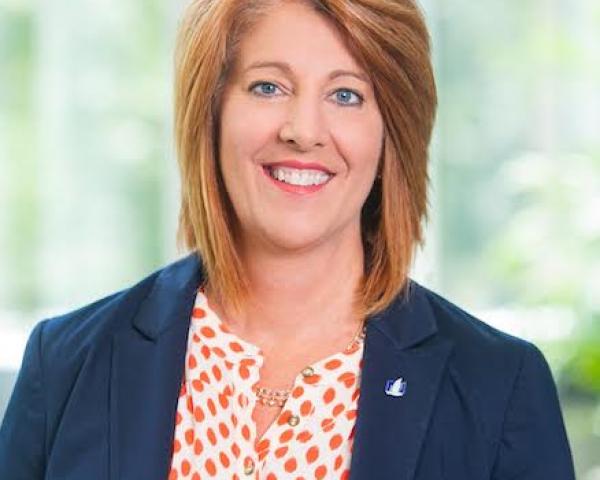The premise is simple: Risk mitigation happens when people take everyday actions that promote their safety for the long term. In the realm of health, life and auto insurance, where such everyday actions constitute much of a policyholder’s risk profile, motivating behavioral change through financial and psychological incentives can dramatically improve outcomes.
That’s the power of behavioral science in insurance. It explains how economic, social and psychological factors influence the way we make decisions. Over the past decade, those insights have been revolutionizing the way insurers approach pricing, underwriting and customer experience.
Encouraging positive lifestyle changes doesn’t just make for healthier policyholders – it’s a symbiotic relationship. Insurance providers can leverage behavioral incentives to increase brand engagement, improve underwriting accuracy and lower costs.
Coupled with tech advances that enable better risk assessment, behavioral science could just be insurers’ silver bullet in a period of stagnant growth and financial strain from the pandemic. Here’s how it works:
Step 1: Focus on Risk Prevention by Encouraging Healthy Behaviors
Over the past 10 or so years, major insurance carriers have begun to incorporate wellness programs into their policies. That’s because prevention is always better than cure.
Serious illnesses that make up the leading causes of death in the U.S. – including heart disease and cancer – result in millions of expensive claims every year. Faced with this troubling reality, insurers asked: Which everyday behaviors do we have the power to encourage that can improve health outcomes and reduce costs?
For many patients, diseases are preventable through lifestyle changes and early risk detection. While not directly involved with policyholders’ medical care and lifestyle activities, insurers realized they could add an incentive to build healthy habits by lowering insurance rates as a reward.
Through partnerships with wellness companies and technology providers, many insurers now encourage healthy behaviors by offering lower premiums:
- Life insurers track your daily steps. A handful of life insurers have partnered with Apple Watch and Fitbit to create step-tracking programs that decrease rates for frequent walkers. Walking more increases life expectancy, which means fewer payouts.
- Medical insurers make it cheaper to go to the gym. A number of medical insurers now provide gym membership discounts and lower premiums when policyholders log their gym visits.
- Medical insurers encourage routine screenings. Insurers lower premiums when customers with genetic risk factors for diseases like cancer and diabetes attend annual screenings and checkups.
- Auto insurers use telematics to encourage safe driving behaviors. Perhaps the best-known example of a prevention model in insurance is the use of telematics to reward more responsible drivers with lower premiums.
See also: 3 Tips for Increasing Customer Engagement
Step 2: Boost Engagement Through Experience Gamification and Brand Touchpoints
Financial incentives aren’t the only powerful motivators in human behavior. Insurers can motivate healthy lifestyle decisions – and enhance the customer experience – by gamifying their products.
The insurance industry has often struggled to build brand loyalty and customer satisfaction because its product is, by nature, easy to ignore. As many as 44% of customers have had no interactions with their insurers during the last 18 months. Unless policyholders have a very negative interaction with their insurer, they’re unlikely to have a memorable brand experience, or even remember the name of their carrier.
Wellness and prevention models are appealing because they're fun. People love games and gratification: It’s triply rewarding when, after going to the gym, policyholders know they’ve not only done something good for their health and their wallet, but they can earn more points on their app.
A gamified product is also an opportunity for more digital brand touchpoints. By creating apps and online platforms for tracking wellness behaviors, insurers can create a stronger brand relationship with their policyholders – and ultimately improve the customer experience.
Step 3: Leverage Data to Price and Underwrite More Accurately and More Efficiently
Encouraging policyholders to take certain actions is only one piece of the puzzle. Once insurers change the way people behave for the better, how can they translate that into tangible business benefits?
The insurance industry has been headed toward digital transformation for the past several years. The increased adoption of tools like artificial intelligence, automation and machine learning has made dynamic behavioral risk assessment models possible.
Insurers collect data upon data on their policyholders’ risk profiles and behavioral patterns. To convert that data into cost savings for their business, insurers will need to leverage tech to write policies on the back end.
By digitizing and automating the pricing and underwriting process, insurers can efficiently and accurately provide fair rates based on healthy habits. A life insurer can assess FitBit data to deliver a lower premium, or an auto insurer can analyze telematics data to determine whether a premium should decrease based on safe driving practices.
At Beam Dental, for example, we underwrite tens of thousands of policies exclusively via AI and ML. This allows us to compare new policyholders against historical claims data to precisely predict pricing and suitable dental plans. And by offering a connected electric toothbrush that tracks daily brushing, we can offer policyholders with good dental habits lower premiums.
See also: How Will Strategies Change in 2021?
Better Health Outcomes, Better Savings, Better Customer Experience
The insurance industry has long needed a jolt of innovation. COVID-19 may be the tipping point in the digital transformation that was already underway.
Now that more and more insurers have access to cutting-edge tech that supports better risk assessment and digital experiences, they have the tools necessary to encourage, track and reward behaviors that reduce risk. Technology is the means, behavioral science is the roadmap and better outcomes for insurers and policyholders alike are the outcome.































